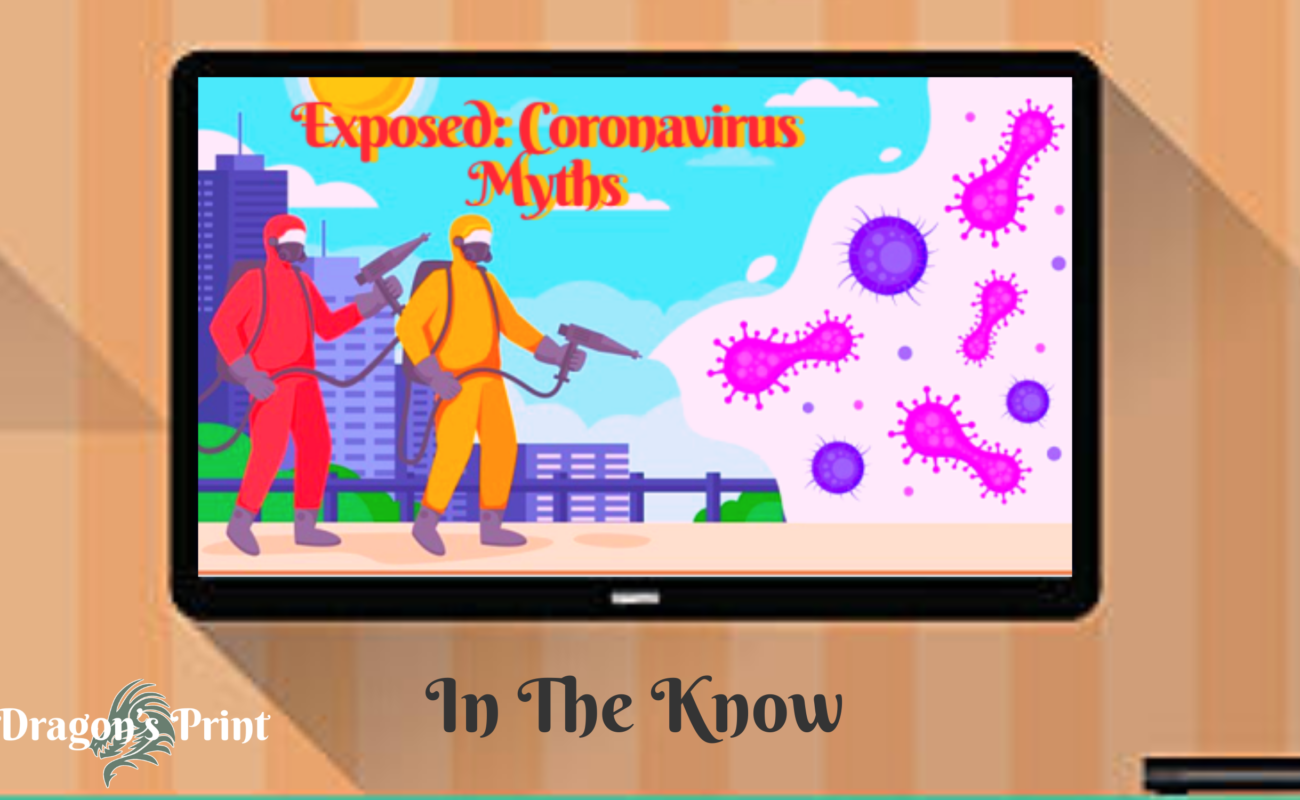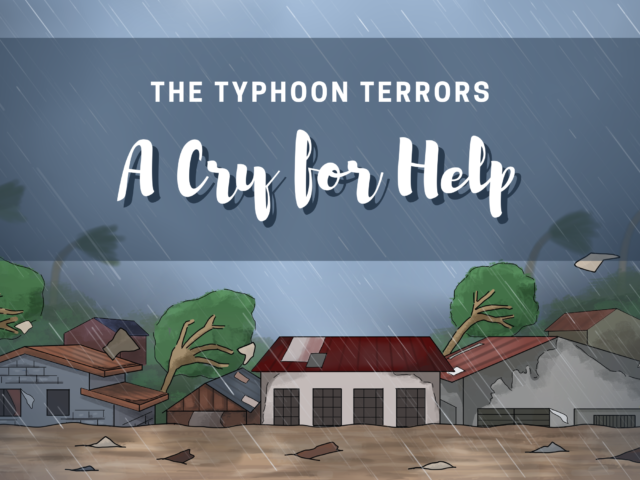In 2020, with a multitude of social media usage and interaction, the internet plays a vital role in today’s world. This cyberspace we have contains platforms where we can hear and voice out our own opinions. Yet recently, millions of people, from celebrities to government officials, have shared their feelings on a disease that has taken over everyone’s lives. Yes, we all know what we’re talking about here: it’s the global COVID-19 pandemic.
The COVID-19 virus has been extremely infectious and dangerous to many people. It’s led to plenty of people seeking and spreading information to try to inform themselves. However, from all the accurate data, there’s a large amount of misinformation also let loose. In this article, we’d like to take responsibility to help you and inform the whole CIS community on the facts and myths of the coronavirus.
DISCLAIMER: All the information stated in this article is credible, reliable, and up to date as of April 3, 2020. So, as the situation keeps evolving, the information in this article may have changed since its publication. That is why you should all keep track of what’s happening through sources like the WHO, and the DOH for more current local news. But for now, stay safe and enjoy the rest of the article.
COVID-19 started from someone eating bat soup.
Myth. But yes, this was a thing. During the beginning of the outbreak, a trending video went viral. It showed a Chinese woman holding a whole bat with chopsticks and eating the creature in the soup. Of course, it sparked a great deal of controversy. However, people found out the video was filmed not in Wuhan but at Palau, and the woman made an apology for her actions. So, COVID-19 did not start from bat soup.
Instead, as you may know, coronavirus originated in Wuhan, China in November 2019. It supposedly started at a wet market in this city which sold animals. With this support, a research article written by the Journal of Medical Virology tested the genetic code of COVID-19. From this, they found that two (SARS) severe acute respiratory syndrome-like samples were similar to the virus, suggesting it most likely came from bats.
However, the protein codes insinuated that snakes spread the disease. As of March 26, ACS’ Journal of Proteome Research found “uncanny similarities” within coronavirus proteins and pangolins instead of snakes. Anyway, for now, the origin of COVID-19 is unclear with some theories saying it jumped from bats to pangolins/snakes, to humans. Nevertheless, what we all at least now know is the bat soup speculation was a bundle of misinformation.
Animals can spread COVID-19.
From the evidence we have right now, no. Currently, there is little evidence that shows that animals can get coronavirus. Despite that, there was a Hong Kong dog owner whose Pomeranian got infected. Yet, the dog never showed symptoms, which has made scientists question the validity of one dog getting it. Jonathan Ball, the professor of Medical Virology at Nottingham University, says we need to find the difference between a dog getting infected and just having the presence of the virus. He continues by stating that we need to find out more, but he doubts dogs are a vector of the virus. Nonetheless, if you are concerned about how to cope with pets, the CDC has a great article here to guide you through your daily life and your animals here.
Wearing a face mask will protect me from COVID-19.
Not necessarily. There are specific models of professional respirators (like the N-95), that protect health workers from treating infected patients. However, a mask isn’t a complete guarantee that it will protect you from COVID-19. This is because a normal mask can only cover your mouth and nose, meaning that your eyes are still vulnerable to the droplets that the virus infiltrates through. Also, tiny viral particles known as aerosols can also penetrate masks. As for healthy people, the WHO recommends to only wear a mask under these circumstances:
- When taking care of someone with a suspected COVID-19 infection.
- If you are coughing or sneezing.
Hence, to do our part as a community, we should limit the number of masks we buy, so that the trained healthcare workers and coronavirus patients have them at the front lines while we do our part staying at home to flatten the curve. Overall, though some types of masks will protect you from COVID-19, the best way for us to prevent it is through effective hygiene.
Parcels and letters can spread COVID-19.
Based on research, no. According to epidemiologist Michael Merson, he said: “There’s no evidence that there’s been spread from infected mail or packages”. This is also supported by the WHO as they say that the virus doesn’t last long on letters and packages.
Only older adults and children are at risk for COVID-19.
No, everyone is at risk. Coronavirus is riskier to elders, people with pre-existing medical conditions, and children with underdeveloped respiratory systems. However, it can still affect all of us, which is why we are all required to stay in our homes. By staying inside, we don’t just protect ourselves, but by not becoming vectors of the virus, we are also protecting those who are more vulnerable to it.
A blow dryer at 140°C at your mucous membranes (mouth, nose, eyelids) can kill the virus.
Nope. This theory came up in a Florida county where the county commissioner said blowing a hairdryer up your nose at 140°C would effectively kill the virus. This is not true. This is not encouraged because putting a hairdryer this close to your nose would not be good. It would most likely cause irritation and first-degree burns, which is why you shouldn’t try to eliminate the coronavirus with a blowdryer.
There is a cure for COVID-19.
Not yet. Since, it’s only been a few months since this virus has been around, no, there haven’t been any vaccines to cure COVID-19. Still, there are already many possible vaccines being created and tested by scientists worldwide. For example, hydroxychloroquine and azithromycin are two vaccines that have been successful in France. Although trials for this vaccine have not been done, it showed no difference to other possibilities in a random controlled Chinese trial. However, we can’t be too sure and we should not be testing it ourselves. As an Arizona couple heard about the cure, found it, drank it, and got killed because they mistook it for a detergent that cleans pond tanks.
That story alone shows how together we will fight off this disease, but it’ll take time. Hopefully, with the help of all the healthcare professionals at the front lines working hard using the limited resources they have, and with everyone staying home in lockdown, listening carefully to the guidelines given, the virus will spread no more. By being alert and not anxious, COVID-19 will be gone in no time and hopefully, a vaccine for a cure will be made in the following months. For now, stay strong, stay healthy, but most importantly, stay safe so that later on, we’ll all have a better and bright future.
Article by Sean K. (Grade 9); Feature image by Jun J. (Grade 9)
The views expressed in this article represent the personal views of the author and should not be taken to represent the views of Dragon’s Print and Cebu International School.



Leave a Reply